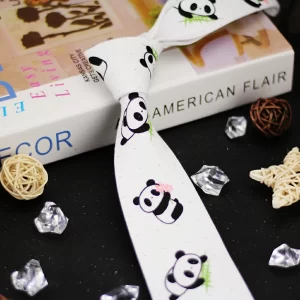A well – made tie can not only enhance your personal image but also show your taste. However, it’s not easy to tell the quality of a tie’s workmanship. This article will guide you through judging a tie’s workmanship from four aspects: material, lining thickness, symmetry of the big end, and stitch width.
Material
The material of a tie is the foundation of its quality. High – quality ties are usually made of natural fabrics such as silk, wool, or cotton.
- Silk ties have a smooth and soft texture, a natural luster, and feel comfortable against the skin. When you touch a silk tie, it should have a certain elasticity and drape. Inferior silk ties may feel rough or have a dull appearance.
- Wool ties are suitable for colder seasons. They are thick and warm, with a good texture. A good wool tie should be tightly woven, not easy to pilling, and have a uniform color.
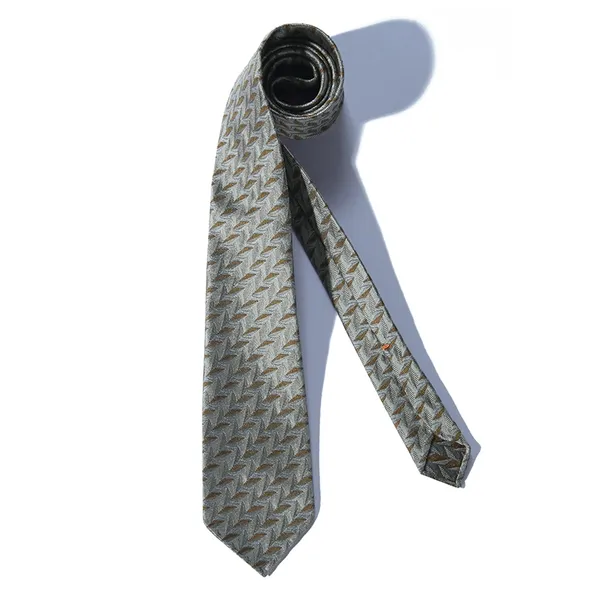
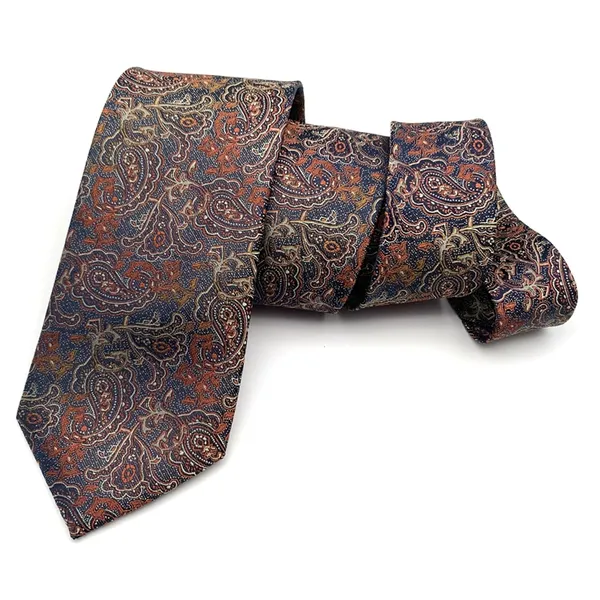
If you need purchase some cheap ties, polyester and cotton ties is the best choice.
- Polyester ties include jacquard and printed types. Polyester ties are affordable, as polyester is cost-effective to produce. They also have good texture—smooth, lightweight, wrinkle-resistant, durable, and easy to care for.
- Cotton ties are more casual. They are breathable and durable. High – quali 5ty cotton ties have a tight weave, no loose threads, and the fabric is thick enough.
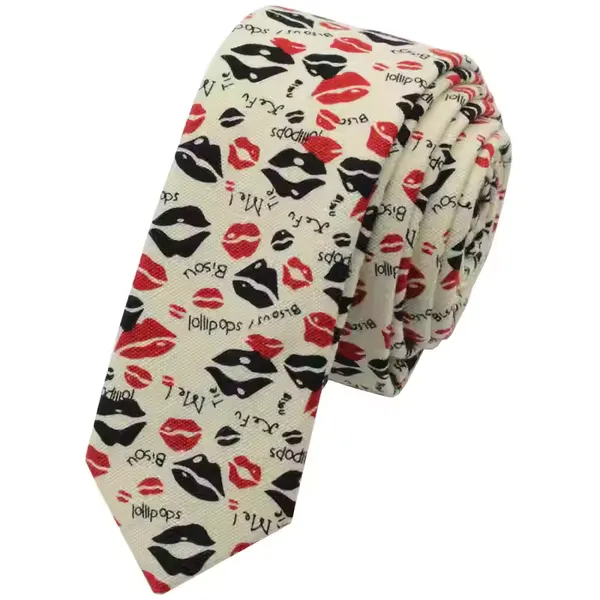
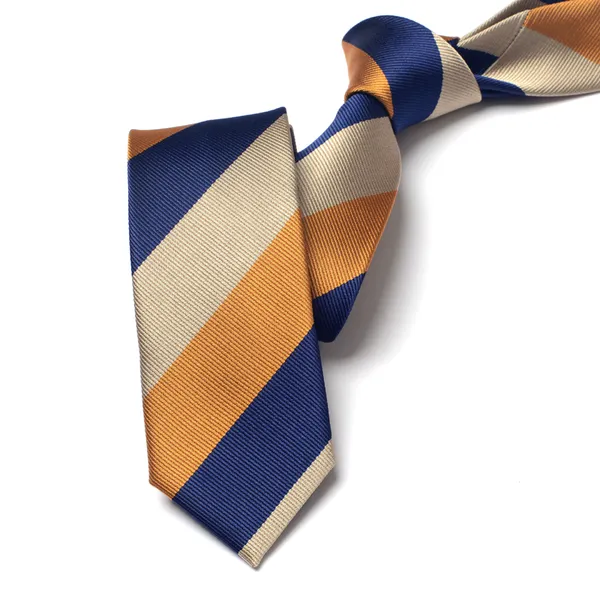
Lining Thickness
The lining plays an important role in maintaining the shape of the tie. The thickness of the lining should be appropriate.
A tie with good workmanship usually has a lining that is thick enough to support the tie, making it stand upright when tied. But it should not be too thick, otherwise, the tie will be stiff and lack flexibility.
You can check the lining by gently pinching the tie. If it feels too thin and flimsy, the tie is likely to lose its shape easily. If it’s too thick and hard, it will be uncomfortable to wear.
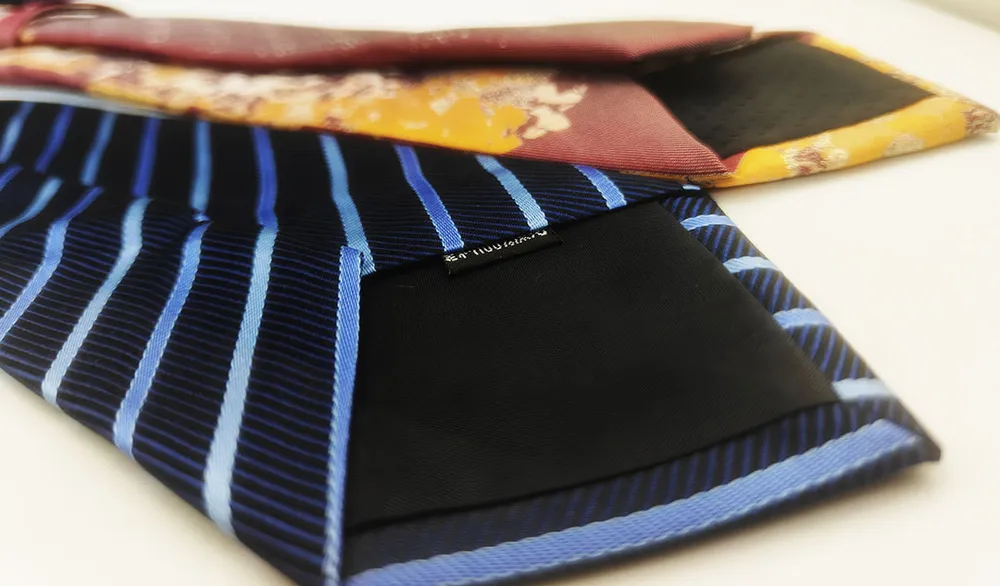
Symmetry of the Big End
The big end of the tie is the most eye – catching part, and its symmetry is a key indicator of good workmanship.
When you lay the tie flat on a table, the pattern or stripes on the big end should be symmetrical on both sides of the center line.
Check if the edges of the big end are straight and parallel. If there are any deviations, such as one side being longer than the other or the pattern being skewed, it indicates poor workmanship.
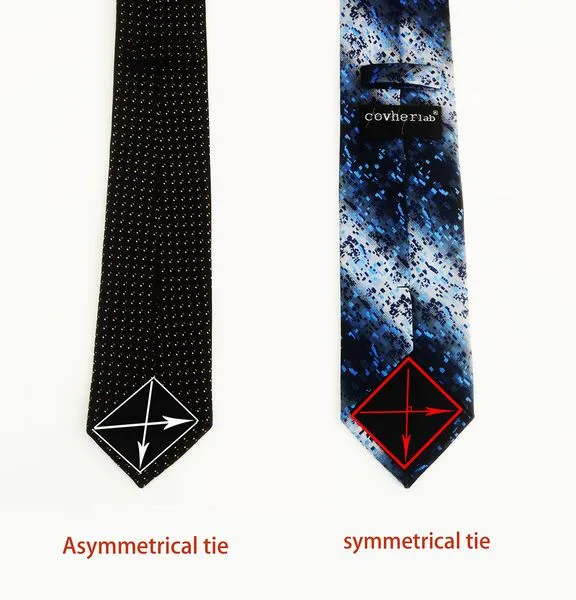
Stitch Width
The stitch work is a direct reflection of the tie’s craftsmanship. The width of the stitches should be uniform throughout the tie.
High – quality ties have neat and tight stitches. The distance between each stitch should be consistent, and there should be no loose threads or skipped stitches.
You can look closely at the edges and seams of the tie. If the stitches are uneven, too loose, or have obvious flaws, it’s a sign of inferior workmanship.
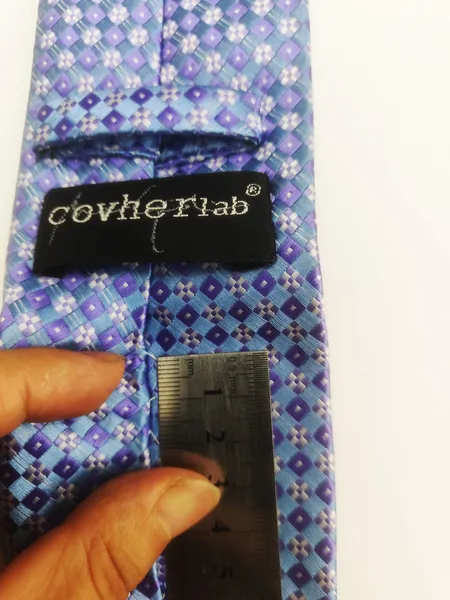
By paying attention to these four aspects: material, lining thickness, symmetry of the big end, and stitch width, you can better judge the workmanship of a tie and choose one that suits you.
